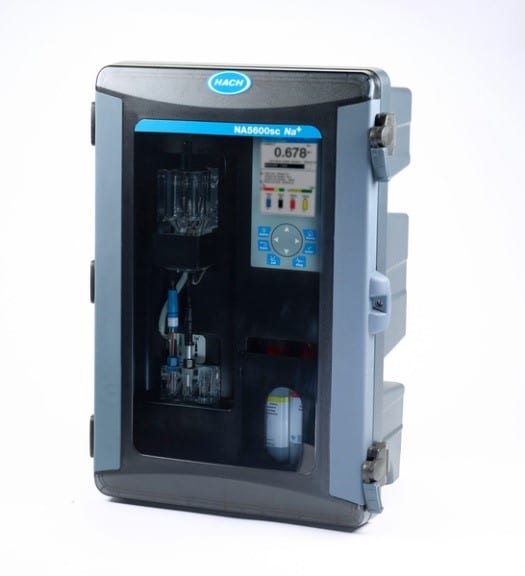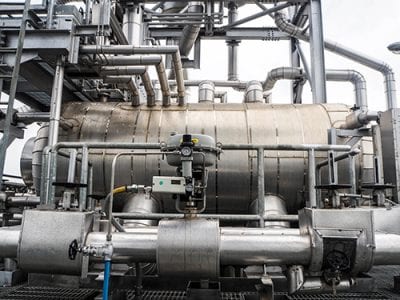Steam generation and use for power production and process heating remains a vital unit operation at many power plants and thousands upon thousands of industrial plants around the globe. Chemistry upsets can cause significant damage to equipment in steam generation systems, sometimes in a very short period of time.
Continuous on-line water/steam chemistry monitoring at critical locations in the steam generating network is typically recommended for detecting chemistry upsets and ensuring chemical treatment programs are controlled within proper ranges. This series of posts will examine the primary sample points and their relationship to water/steam chemistry. This post examines the high-pressure units for power generation, and we will discuss lower-pressure industrial steam generators in the next portion of the series.
With the decline of coal-fired power generation and the upswing in renewable energy, a large bridge between the two has been and continues to be simple- and especially combined-cycle power generation with natural gas as the primary fuel. The next several posts will examine primary monitoring parameters for the most common type of heat recovery steam generator (HRSG) from the combined cycle industry: the triple-pressure HRSG, including both the feed-forward low-pressure (FFLP) type and the stand-alone low-pressure (SALP) type.
Note: Low-pressure refers to just the first circuit in these multi-pressure units. Steam for turbine powering comes from the intermediate- and especially high-pressure circuits, commonly termed evaporators, and thus makeup water and feedwater purity must be designed for high pressures and temperatures.
The samples of primary importance throughout either of these designs are:
- Makeup treatment system
- Condensate pump discharge
- Feedwater or economizer inlet
- Boiler water
- Saturated steam
- Main and reheat steam
The discussions will include the normal upper limit, or range, for most of the monitoring parameters. This data and many other details may be found in published documents by the Electric Power Research Institute (EPRI), though they are available only to EPRI members. The International Association for the Properties of Water and Steam (IAPWS) offers technical documents with similar, albeit more condensed, information, which are freely downloadable from their website: www.iapws.org.
Makeup Treatment System
Even in the tightest steam generators, a small amount of process water/steam escapes continually. These losses must be made up with high-purity water. The most common core makeup system process is reverse osmosis (RO), followed by either mixed-bed ion exchange (MBIX) or electrodeionization (EDI) to polish the RO effluent. RO units typically include a number of instruments to monitor system performance, including pressure, temperature, flow, pH, and specific conductivity, which are a subject for a separate discussion. The list below outlines the recommended upper limit for the three recommended sampling parameters of the makeup system effluent.
- Specific conductivity (S.C.): ≤0.1 µS/cm
- Silica: ≤10 parts per billion (ppb)
- Sodium: ≤2 ppb

An on-line sodium analyzer. Photo courtesy of Hach.
These measurements ensure high-purity water is continuously being distributed to the steam generators. A rise in any of the values indicates that either the MBIX resin has reached exhaustion or a problem has occurred in the EDI unit. Prompt corrective action is necessary.
Look for subsequent posts as we proceed through the steam generating network and evaluate critical sampling points and parameters.
Please contact ChemTreat for assistance in designing a treatment program customized for your application. Like all other technologies, due diligence is necessary to determine the feasibility for utilizing methods. Always consult your equipment manuals and guides.

